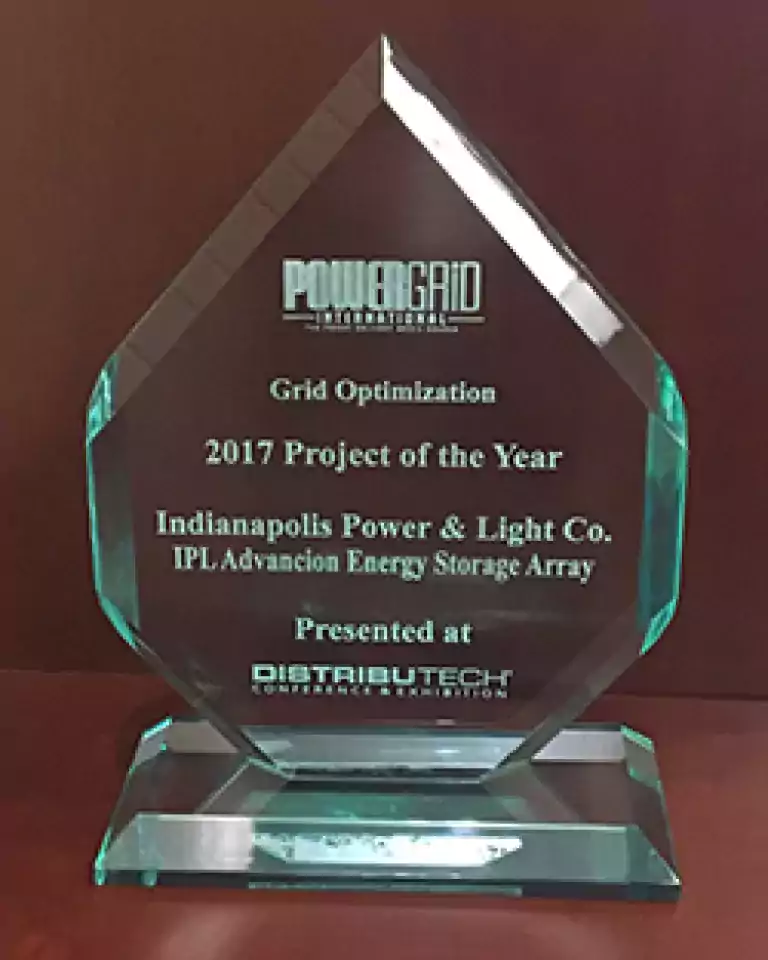Energy storage
What is the AES Indiana Advancion energy storage array?
Located at AES Indiana’s Harding Street Station, the lithium-ion battery array is housed in a large building and looks very similar to a data center. The Battery Energy Storage System (BESS) is a modular design comprised of eight (8) two and a half megawatt (2.5 MW) cores, each with 30 or more nodes. There are a total of 244 nodes. A node is a rack of battery trays and invertors. Over 20,000 data points in each core are monitored and controlled through software. Each node contains 20 battery trays with 20 wafer batteries in each tray for a total of 97,600 lithium-ion batteries. It is in full commercial operation and is providing Primary Frequency Response (PFR) to the grid on a 24/7 basis.
How does energy storage work?
The AES Indiana array uses lithium-ion batteries, which are the same technology as the batteries used in your laptop or cell phone, to help balance the grid frequency by instantaneously adding or removing energy. The batteries are connected to the electric grid and managed by the patented Advancion control system.
What are the benefits of energy storage for AES Indiana customers?
The AES Indiana array delivers frequency control services including PFR and Frequency Regulation automatically without the need for dispatch or human intervention. Both services mitigate deviations from the nominal frequency of 60 Hertz. It is the first energy storage system in the U.S. being used to provide PFR.
Deviations from 60 Hertz can cause problems with process equipment, computers, lighting and electric motors. If deviations are prolonged and/or of sufficient magnitude, power plants can trip-off and stop operating which can lead to brownouts or blackouts.
With existing infrastructure, advanced technologies like the AES Indiana array will benefit AES Indiana’s customers with safe and reliable service and a more resilient grid.
